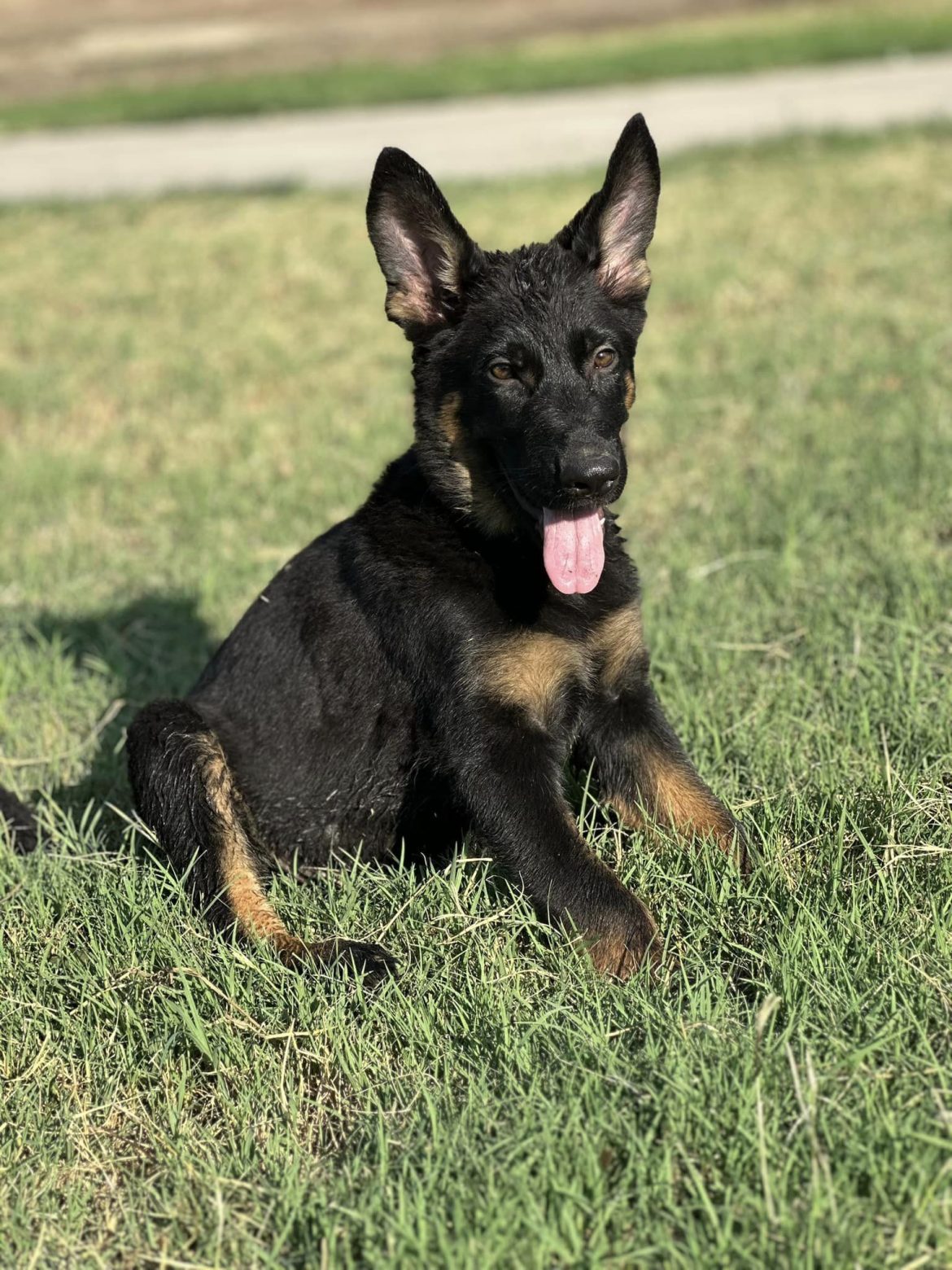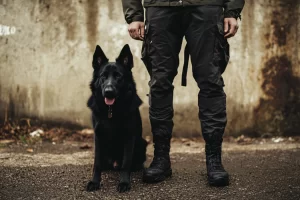Six Key Steps to Prepare Your German Shepherd Puppy for Schutzhund
Schutzhund, also known as IPO (Internationale Prüfungs-Ordnung), is a dog sport that originated in Germany and was designed to evaluate and enhance the working capabilities of German Shepherds. The sport encompasses tracking, obedience, and protection work, making it a comprehensive test of a dog’s temperament, physical capabilities, and training. Preparing a German Shepherd puppy for Schutzhund is a complex process that requires a thorough understanding of canine behavior, genetics, and training techniques. This article outlines six key steps to effectively prepare your German Shepherd puppy for Schutzhund, supported by insights from academic research and expert practices.
1. Understanding the Genetic History of Your German Shepherd Puppy
The foundation of successful Schutzhund training lies in selecting a puppy with the right genetic predisposition. German Shepherds bred for working purposes tend to have the drive, temperament, and physical attributes necessary for Schutzhund. Research has shown that genetics play a significant role in determining a dog’s suitability for work that requires high levels of focus, stamina, and trainability (Wilsson & Sundgren, 1997). When selecting a puppy, it is essential to choose one from a reputable breeder who prioritizes working line pedigrees with proven Schutzhund capabilities. These breeders often perform extensive health screenings and temperament assessments to ensure their puppies are well-suited for the demands of the sport (Coppinger & Schneider, 1995).
In addition to selecting the right puppy, understanding the genetic traits that contribute to success in Schutzhund—such as prey drive, nerve stability, and the ability to handle stress—is crucial. Dogs with high prey drive, for example, are more motivated to chase and retrieve, which is beneficial in both the tracking and protection phases of Schutzhund (Helton, 2009). Nerve stability allows the German Shepherd puppy to remain calm under pressure, while a balanced temperament ensures that the dog can transition between high-energy tasks and calm obedience work.
2. Early Socialization and Environmental Exposure
Socialization is a critical aspect of any dog’s development, but it is particularly important for puppies destined for Schutzhund. Early socialization should focus on exposing the puppy to a wide range of environments, people, animals, and situations in a controlled and positive manner. The goal is to build the puppy’s confidence and ensure that it can focus on its handler even in the presence of distractions (Serpell & Jagoe, 1995). Puppies that are well-socialized are more likely to handle the varied and challenging environments encountered in Schutzhund trials without exhibiting fear or aggression.
Environmental exposure should be gradual and tailored to the puppy’s developmental stage. For example, young puppies should be introduced to different surfaces, sounds, and objects, helping them to develop curiosity and resilience (Landsberg et al., 2013). Positive reinforcement techniques, such as the use of treats and praise, should be employed to create positive associations with new experiences. This lays the groundwork for the complex tasks the puppy will be required to perform during Schutzhund training.
3. Building Drive and Motivation in Your German Shepherd Puppy
Drive, particularly prey drive, is a key component of a successful Schutzhund dog. Building and channeling this drive is essential from an early age. Play-based activities that involve chasing, retrieving, and tugging can help to enhance a puppy’s natural instincts and focus them in a productive manner. These activities should be structured to encourage the puppy to engage with its handler, reinforcing the bond and establishing the handler as a source of reward and excitement (Pryor, 2006).
In addition to prey drive, food drive and toy drive can be used to motivate the puppy during training. Consistent use of high-value rewards, such as favorite toys or treats, can help maintain the puppy’s enthusiasm for training sessions (Blackwell et al., 2008). It is important to balance these drives to ensure that the German Shepherd puppy remains eager to work without becoming overly fixated on any single reward. Varying the type of rewards used can prevent the puppy from becoming bored and can keep training sessions dynamic and engaging.
4. Establishing Basic Obedience
Basic obedience is the cornerstone of Schutzhund training. Before a puppy can progress to the more complex tasks required in Schutzhund, it must have a solid foundation in basic commands such as sit, stay, come, and heel. These commands not only establish the necessary control over the dog but also form the basis for more advanced obedience tasks, such as off-leash heeling and the down-under-distraction exercises required in Schutzhund (Lindsay, 2000).
Training sessions for basic obedience should be short, frequent, and positive. Puppies have limited attention spans, so it is important to keep sessions engaging and fun while ensuring that the puppy understands and responds reliably to each command (Overall, 2013). Consistency is key—commands should be given in the same tone of voice and followed by the same reward each time. As the puppy masters each command, distractions should be gradually introduced to ensure that the puppy can maintain focus and obedience in various settings.
5. Introducing Tracking Exercises with Your German Shepherd Puppy
Tracking is one of the three core components of Schutzhund, and it requires a dog to follow a scent trail with precision and focus. Introducing tracking exercises at an early age helps to develop the puppy’s natural scenting abilities and teaches it to work independently while following the handler’s cues (Helton, 2009). Early tracking exercises should be simple and fun, with the scent trails being short and easy to follow.
To begin tracking training, handlers can use food or toys to create a simple scent trail. The puppy is then encouraged to follow the trail, with rewards provided at the end. As the puppy’s confidence and ability grow, the complexity of the trails can be increased, incorporating turns, changes in terrain, and varying scent ages (Coppinger & Schneider, 1995). The key is to build the puppy’s focus and endurance gradually, ensuring that tracking remains a rewarding and enjoyable activity.
6. Developing Protection Skills in Your German Shepherd Puppy
Protection work is perhaps the most iconic aspect of Schutzhund, requiring the dog to display courage, control, and obedience in high-pressure situations. However, developing these skills in a young puppy requires careful management to avoid creating fear or aggression. Early protection training should focus on building the puppy’s confidence and teaching it to engage with a decoy in a controlled manner (Schilder & van der Borg, 2004).
One method for introducing protection skills is through play-based exercises that simulate the protection phase of Schutzhund. For example, tug-of-war games can help to build the puppy’s grip strength and confidence, while also teaching it to respond to the handler’s commands to release (Lindsay, 2000). It is important that these exercises are conducted under the guidance of an experienced trainer to ensure that the puppy is developing the correct behaviors and that any signs of stress or fear are addressed immediately.
As the puppy matures, more formal protection training can be introduced, including bite work and controlled aggression exercises. These should always be conducted with the utmost care, ensuring that the puppy remains focused and controlled, and that its natural instincts are directed in a positive and safe manner (Overall, 2013).
Conclusion
Preparing a German Shepherd puppy for Schutzhund is a multifaceted process that requires a deep understanding of canine behavior, genetics, and training techniques. By following these six key steps—selecting a puppy with the right genetic foundation, providing early socialization and environmental exposure, building drive and motivation, establishing basic obedience, introducing tracking exercises, and developing protection skills—handlers can lay the groundwork for success in this challenging and rewarding sport. Each step is integral to developing a well-rounded, confident, and capable Schutzhund dog, one that embodies the intelligence, loyalty, and work ethic for which the German Shepherd breed is renowned.
Bibliography
- Blackwell, E. J., Twells, C., Seawright, A., & Casey, R. A. (2008). The relationship between training methods and the occurrence of behavior problems, as reported by owners, in a population of domestic dogs. Journal of Veterinary Behavior, 3(5), 207-217.
- Coppinger, R., & Schneider, R. (1995). Evolution of working dogs. In J. Serpell (Ed.), The Domestic Dog: Its Evolution, Behaviour, and Interactions with People (pp. 21-47). Cambridge University Press.
- Helton, W. S. (2009). Cephalic index and perceived dog trainability. Behavioural Processes, 82(1), 355-358.
- Landsberg, G., Hunthausen, W., & Ackerman, L. (2013). Behavior Problems of the Dog and Cat-E-Book. Elsevier Health Sciences.
- Lindsay, S. R. (2000). Handbook of Applied Dog Behavior and Training, Volume One: Adaptation and Learning. Iowa State University Press.
- Overall, K. L. (2013). Manual of Clinical Behavioral Medicine for Dogs and Cats. Elsevier Health Sciences.
- Pryor, K. (2006). Don’t Shoot the Dog!: The New Art of Teaching and Training. Ringpress Books.
- Schilder, M. B. H., & van der Borg, J. A. M. (2004). Training dogs with help of the shock collar: Short and long term behavioural effects. Applied Animal Behaviour Science, 85(3-4), 319-334.
- Serpell, J. A., & Jagoe, J. A. (1995). Early experience and the development of behavior. In J. A. Serpell (Ed.), The Domestic Dog: Its Evolution, Behaviour, and Interactions with People (pp. 79-102). Cambridge University Press.
- Wilsson, E., & Sundgren, P. E. (1997). The use of a behavior test for the selection of dogs for service and breeding. I. Method of testing and evaluating test results in the adult dog. Applied Animal Behaviour Science, 53(4), 279-295.




